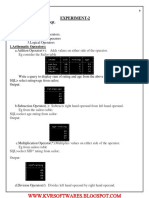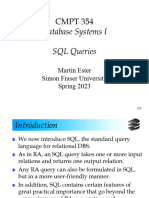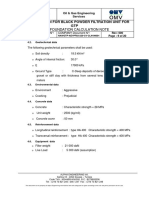0% found this document useful (0 votes)
21 views14 pages5.DBMS Lab5 - Nested Queries
The document outlines various SQL operators including arithmetic, logical, relational, and set operators, as well as their syntax and usage. It explains column and table aliases, subqueries, and aggregate functions with examples. Additionally, it includes exercises to practice SQL queries related to sailors and boats.
Uploaded by
sunbun2070Copyright
© © All Rights Reserved
We take content rights seriously. If you suspect this is your content, claim it here.
Available Formats
Download as PPTX, PDF, TXT or read online on Scribd
0% found this document useful (0 votes)
21 views14 pages5.DBMS Lab5 - Nested Queries
The document outlines various SQL operators including arithmetic, logical, relational, and set operators, as well as their syntax and usage. It explains column and table aliases, subqueries, and aggregate functions with examples. Additionally, it includes exercises to practice SQL queries related to sailors and boats.
Uploaded by
sunbun2070Copyright
© © All Rights Reserved
We take content rights seriously. If you suspect this is your content, claim it here.
Available Formats
Download as PPTX, PDF, TXT or read online on Scribd
/ 14






















































































